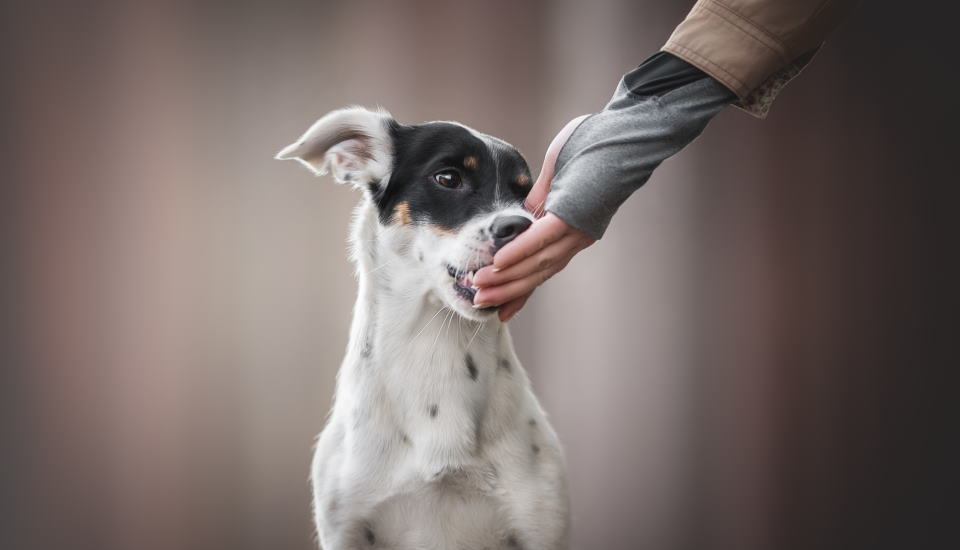Are you struggling to get your dog to eat their vegetables? You’re not alone. Many dog owners have found themselves in the same predicament, wondering why their furry friends refuse to consume the healthy greens that are so good for them. In this blog post, we will explore the reasons behind why some dogs are picky eaters when it comes to vegetables. From sensitivity to texture preferences, we’ll discuss how to introduce variety into their diet and the health benefits of adding vegetables to their meals. So if you’re looking for some insight into why your dog turns their nose up at veggies, keep reading to learn more about this common behavior and how to address it.Discover how to cater to picky eaters and introduce variety in texture preferences while reaping the health benefits of dietary sensitivity.
Sensitivity
Some dogs may refuse to eat vegetables due to their sensitivity to certain tastes and textures. Just like humans, dogs have individual preferences when it comes to food, and some may find the taste of vegetables unpleasant. This sensitivity can be influenced by genetics, upbringing, and past experiences with certain foods. It’s important to respect your dog’s preferences and not force them to eat something they don’t like. Instead, you can try introducing a variety of vegetables to see if there are certain ones that your dog may enjoy.
Additionally, some dogs may have a sensitivity to the texture of vegetables. They may find the crunchy texture of raw vegetables off-putting and may prefer cooked or pureed vegetables instead. It’s important to observe your dog’s reaction to different textures and make adjustments to their diet accordingly. For example, if your dog dislikes the texture of raw carrots, you can try steaming or pureeing them to see if they are more palatable.
If your dog is showing signs of sensitivity to certain vegetables, it’s important to consult with a veterinarian or a professional dog nutritionist. They can provide guidance on how to address your dog’s specific dietary needs and ensure that they are receiving all the necessary nutrients from their diet. It’s also important to consider incorporating other sources of nutrients such as protein and grains to ensure that your dog’s dietary needs are met.
In conclusion, sensitivity to taste and texture can play a significant role in why some dogs refuse to eat vegetables. It’s important to be understanding of your dog’s preferences and make adjustments to their diet based on their individual needs. By consulting with a professional and experimenting with different cooking methods and ingredients, you can find ways to incorporate vegetables into your dog’s diet in a way that is enjoyable and nutritious for them.
Introducing Variety
Many dog owners struggle with trying to get their furry friends to eat vegetables. It’s not uncommon for dogs to refuse to eat veggies, but it doesn’t have to be a constant battle. One of the best ways to encourage your dog to eat vegetables is by introducing variety into their diet. Dogs, like humans, can get bored with the same old food day in and day out. By adding different types of vegetables to their meals, you can pique their interest and get them excited about trying new things.
When introducing variety into your dog’s diet, it’s important to start slowly. Some dogs may be hesitant to try new foods, so it’s best to start with small amounts and gradually increase the portion sizes. You can also mix the vegetables with their regular food to make the transition easier. By slowly incorporating new vegetables into their diet, you can help your dog become more open to trying different foods.
Another way to introduce variety into your dog’s diet is by mixing up the presentation of the vegetables. Some dogs may not be inclined to eat a raw carrot, but they might enjoy it if it’s cooked or pureed. You can also try serving the vegetables in different ways, such as steamed, roasted, or blended into a homemade dog treat. By getting creative with how you present the vegetables, you can make them more appealing to your dog.
Overall, introducing variety into your dog’s diet can help them become more open to eating vegetables. By starting slowly, mixing up the presentation, and being persistent, you can encourage your dog to expand their palate and enjoy a wider range of healthy foods.
Texture Preferences
Many dogs have specific texture preferences when it comes to their food. Some dogs may refuse to eat vegetables simply because they don’t like the texture. For example, a dog may not enjoy the crunchiness of raw vegetables or the mushiness of cooked ones. Understanding your dog’s texture preferences can help you provide them with the food that they enjoy and are more likely to eat.
It’s important to remember that just like humans, dogs have their own individual preferences when it comes to the texture of their food. Some may enjoy soft and moist food while others prefer something a bit harder to chew. If your dog is refusing to eat certain foods, it may be because they have specific texture preferences that are not being met with their current diet.
When trying to introduce new foods to your dog, it’s important to consider their texture preferences. You may need to experiment with different cooking methods or textures to find something that your dog enjoys. For example, if your dog doesn’t like the crispiness of raw carrots, you can try steaming or boiling them to see if they prefer a softer texture.
Understanding your dog’s texture preferences can also help you make healthier choices for them. If your dog turns their nose up at raw or steamed vegetables, you can try incorporating them into a homemade dog treat or mixing them into their regular food to see if they are more willing to eat them in a different form.
Picky Eaters
Many dog owners have experienced the frustration of trying to get their furry friends to eat their vegetables. It can be especially difficult when you know the health benefits that vegetables can provide for your pet. So why do some dogs refuse to eat their greens?
For some dogs, it simply comes down to sensitivity to certain textures and tastes. Just like humans, dogs have their own texture preferences and may not enjoy the feeling of certain vegetables in their mouths. This can lead to them refusing to eat these foods, no matter how much you try to convince them.
Introducing variety into your dog’s diet can help to combat picky eating habits. By offering a range of different vegetables and fruits, you can help your dog to find something that they enjoy. It’s important to remember that not all dogs will have the same health benefits from different vegetables, so it’s worth experimenting with different options.
Ultimately, understanding why your dog is refusing to eat vegetables can come down to their individual preferences and tastes. By being patient and persistent, you may be able to find a solution that works for both you and your pet.
Health Benefits
Many dog owners wonder why their pets refuse to eat vegetables. It’s actually quite common for dogs to be picky eaters when it comes to certain foods, especially vegetables. But did you know that there are actually many health benefits for dogs when it comes to eating vegetables?
One of the main health benefits of vegetables for dogs is the fact that they provide essential nutrients such as vitamins, minerals, and fiber. These nutrients are essential for maintaining a healthy and balanced diet, and can help prevent diseases and illnesses in dogs.
It’s also important to note that some vegetables can even help to support a dog’s immune system, thanks to their high levels of antioxidants and other beneficial compounds. This can help to keep your furry friend healthy and happy in the long run.
In addition to this, certain vegetables can also help with weight management in dogs. Since vegetables are low in calories and high in fiber, they can help your dog feel full while consuming fewer calories. This can be especially beneficial for overweight or obese dogs.









